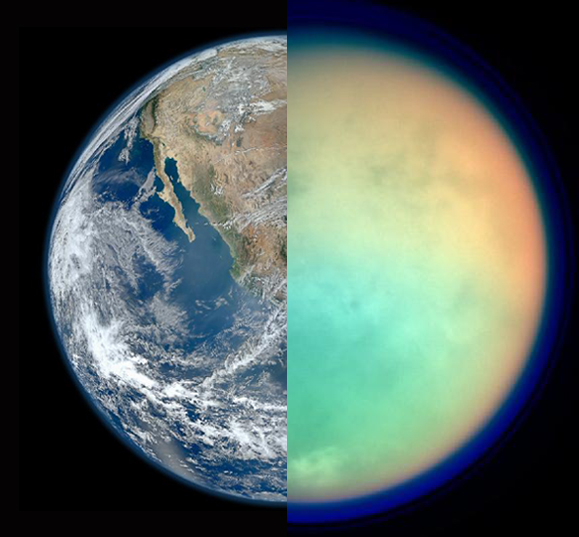Pale Orange Dot
Carl Sagan was an inspiration to so many of us. As a modern-day scientist and educator, I am amazed at both the strength of his research career coupled with his gift for communication, which he so selfless shared with the world, and would be a happy person if I could contribute only a small fraction of what he did to either of these endeavors. In that vein, this ones for you, Carl. Carl famously referred to how Earth would be seen from a far away solar system as a Pale Blue Dot. While this has likely been true for most of the 4.5 billion year history of Earth, there are times when the atmospheric chemistry may have changed. In particular, my colleagues and I have been involved in an interesting recent discovery that for time periods in Earth history, the atmosphere may have been enriched in organic haze, similar to Saturn’s moon Titan (see Zerkle et al. 2012 and Izon et al. 2015 below, and (hopefully coming soon!) Izon et al. 2017 above). Giada took this work to the next level, exploring both the climatic consequences of hazy early earth, and studying the observability of hazy exoplanets around stars of different spectral types. Giada also calculated the color of the sky you might have seen if you happened to be hanging around 2.7 billion years ago. Check out the paper for details, but spoiler alert – and I only wish Carl was around to appreciate this and/or to help me craft more beautiful prose – Earth also been a Pale Orange Dot.
